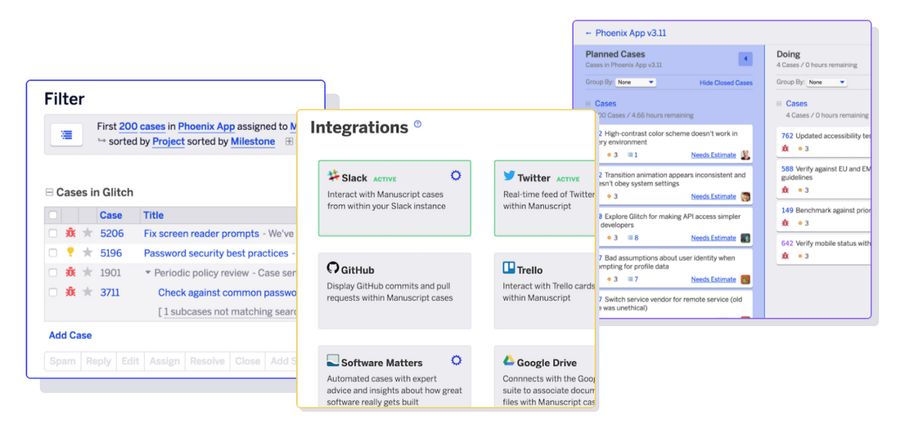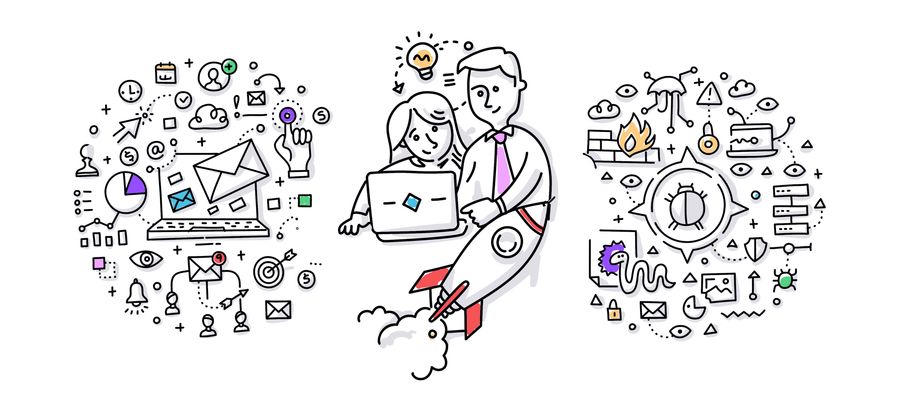Bug Tracking and Helpdesk Software: Better Together
I’ve experienced this kind of separate setup, see if any of this sounds familiar:
Customers email in reporting bugs and they get routed into the Support team’s Helpdesk software. Meanwhile, the development team track their development tasks, like bug fixes, in their own separate bug tracking software. So for the developers to hear about the bugs you have a weekly meeting with the Development team lead. In this meeting Support flag up the priority customer issues, tickets get created in the bug tracking software and added to the backlog for the upcoming sprint.
But without an integration between the two systems, you have to add links, manually.
The Development team adds links to the emails in Support’s Helpdesk system from the issues they’ve opened in the bug tracker, in order to provide context for the developers tasked to fix them. Meanwhile, the Support team add links to the development tasks in the Development team’s bug tracker so they can track progress on fixes for customers’ problems.
And this works, sort of. Problems get reported and things do get fixed — it’s just not very efficient.
There’s the time spent finding the issues in the respective systems, as well as the duplication of effort in creating the links back and forth. Of course, folks sometimes forget to add links to the bug tracking tasks or help desk tickets, so some things slip through the cracks. With no notifications of updates, you have to rely on noticing the work has been completed to update a customer. If a customer comes back with more information about an issue then the developer probably won’t see it either.
And that’s just bugs.
Feature requests are a whole different problem, with spreadsheets or tasks being added along with, you guessed it,* yet more links*.
It’s fair to say that working this way, things get messy, quickly.

So Manuscript does things differently. We fuse bug tracking and a helpdesk together, so you have a single place where issues get reported and fixed. This means you collaborate on issues — with members of both the support and development teams working together.
In Manuscript, since emails are cases the developers have all the context they need. If a customer provides additional info, they see it. And if a customer reports a critical issue, you can assign the case to a developer for immediate action. Of course, because the systems are seamlessly integrated there are no links to remember update, so you don’t miss anything either.
But it’s not just about being more responsive, it means you can become pro-active too.
Having bug tracking and a helpdesk together makes it easier for you to incorporate customer feedback directly into the development process. With our Crash Reporting functionality, you can have your software report errors, exceptions, and in-app customer feedback itself. So you know which bugs to prioritize with the recording of the number of customers impacted.
Of course, you get all the stuff you’d expect in a helpdesk — like the ability to prioritize, assign, track, and of course, reply to customer emails. But then we take it a step further by triaging those emails for you. Using AI, customer emails go straight to the relevant team or member’s inbox. And since inquiries demand a different kind of response whether, for example, they’re reporting a bug or suggesting a feature, we enable you to set different workflows by type of email.
Long-time customer, Rogue Amoeba, began using Manuscript for exactly this reason. They started with just a help desk product, but found that it wasn’t enough — “having support and bug tracking in one place is something we wanted to do,” says CEO, Paul Kafasis. With Manuscript, they found that “having the customer communication together with feature requests and bugs, was really useful so we could communicate with a customer and say ‘oh yea that’s fixed in so and so version’”. It also meant that staff could seamlessly transition between roles, for example, “one of our support techs transitioned to development, so he’s seen both sides of it.”
By more efficiently handling customer inquiries, you’ll have more time to spend actually solving their problems. While having development and support staff working closer together means your whole team are better informed about customer problems, feature requests and the work required to implement them. The result of this is you can build better products.
Learn more about Manuscript and begin a trial today.

